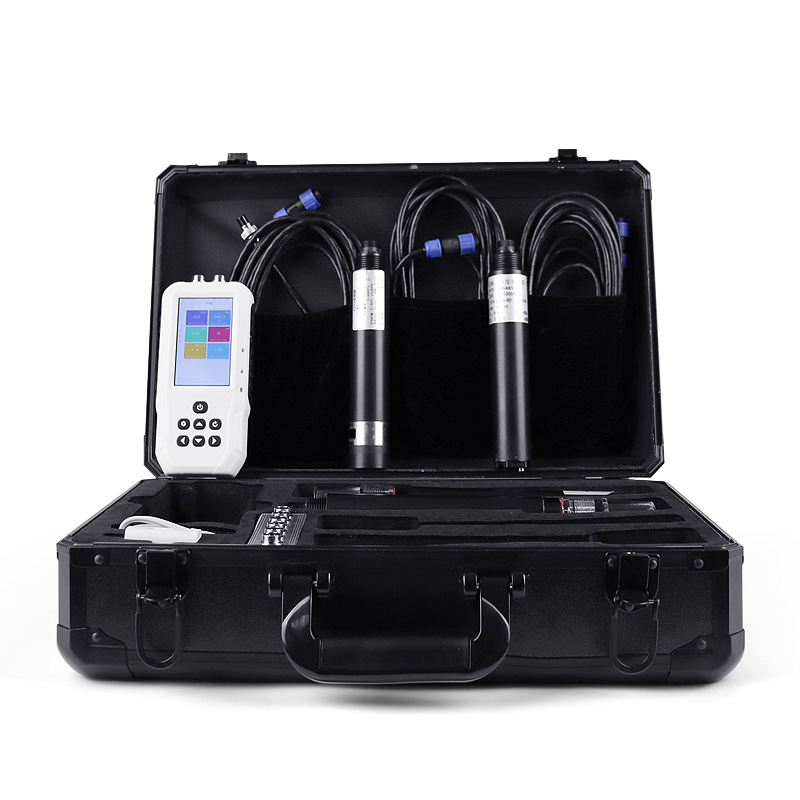Tianqiong Sensor IOT Technology Co., Ltd
Sales Manager:Ms. Emily Wang
Cel,Whatsapp,Wechat:+86 15898932201
Email:info@fengtutec.com
Add:No. 155 Optoelectronic Industry Accelerator, Gaoxin District, Weifang, Shandong, China

Sales Manager:Ms. Emily Wang
Cel,Whatsapp,Wechat:+86 15898932201
Email:info@fengtutec.com
Add:No. 155 Optoelectronic Industry Accelerator, Gaoxin District, Weifang, Shandong, China

Model:FT-SS17S
Brand:tianqiong
1.Oil In Water Sensor Product Introduction
Oil In Water Sensor continuously monitors surface water, process water and industrial water for any signs of mineral oil contamination.Oil In Water Sensor is an electrode method water quality analysis instrument that uses fully digital electrode detection to detect oil in water.The instrument is equipped with a self-developed FTIOT operating system, which has simple operation, stable performance, accurate measurement, wide detection range, and has a built-in high-capacity rechargeable lithium battery, which is convenient for users to conduct water quality inspection at any time in the field and in the laboratory.
2.Oil In Water Sensor host parameters
| Charging input voltage | 4.5V-5.5V |
| Charging current | <2A |
| Screen size | 3.5 inches |
| Screen resolution | 480*800☆ |
| Screen interface | MIPI DSI☆ |
| USB port | 2 (Support external expansion of mouse, keyboard, 4G, etc.)☆ |
| Type-C | 1 (Support external expansion of mouse, keyboard, 4G, etc.)☆ |
| RS485 | 2 (Support Modbus, json, asc input, etc.) |
| External sensor power supply voltage | 12V |
| External sensor power supply current | 1A |
| operating system | ftiot (based on Linux-5.4)☆ |
| CPU | 2*Cotex-A7, 650Mhz☆ |
| RAM | 512M DDR3☆ |
| Flash | 8G-64G |
| OpenGL | ES 2.0☆ |
| Wifi | support |
| 4G | Selection |
| button | support |
| Capacitive touch screen | support |
| Software Architecture | B/S☆ |
| Web access | Support ☆ |
| MTP mode | Support ☆ |
| Multi-terminal login | Support ☆ |
| IPV6 | Support ☆ |
| Sensor communication method | RS485, TCP, UDP, Http☆ |
| Data forwarding method | RS485, TCP, UDP, Http☆ |
| Remote SSH | Support ☆ |
| Remote debugging | Support ☆ |
3.Oil In Water Sensor parameters and configuration
| Serial number | name | Measurement range | principle | Measurement accuracy | Resolution | Configuration | Remark |
| 1 | temperature | 0~50℃ | High-precision digital sensor | ±0.3℃ | 0.01℃ | ||
| 2 | pH | 0~14 (ph) | Electrochemistry (salt bridge) | ±0.1PH | 0.01 | ||
| 3 | ORP | -1500mv~1500mv | Electrochemistry (salt bridge) | ±6mv | 1mV | ||
| 4 | Conductivity | 0~5000uS/cm, 0~10000uS/cm | Contact electrode method | ±1.5% | 1uS/cm | ||
| 5 | TDS | 0-10000ppm 0-200ppt | Contact electrode method | ±1.5%; ±0.1°C | 1ppm 0.01ppt | ||
| 6 | salinity | 0-10000ppm 0-200ppt | Contact electrode method | ±1.5%; ±0.1°C | 1ppm 0.01ppt | ||
| 7 | Sludge concentration | 0~20.000g/L | Scattering light method | ±5% (depending on sludge homogeneity) | 0.001g/L | ||
| 8 | Turbidity | 0~40NTU (low turbidity) | Scattering light method | ±1% | 0.1NTU | Optional | |
| 0~1000NTU (medium turbidity) | Scattering light method | ±1% | |||||
| 0~3000NTU (high turbidity) | Scattering light method | ±1% | |||||
| 9 | Dissolved oxygen | 0~20mg/L | Fluorescence life method | ±2% | 0.01mg/L | ||
| 10 | Ammonia nitrogen | 0-1000.00mg/L (default) 0-100.00mg/l/ (customizable) | Ion Selection Electrode Method | 10% of reading, ±0.5℃ | 0.01mg | ||
| 11 | Suspension | 0~2000mg/L | Scattering light method | ±5% (depending on sludge homogeneity) | 0.1mg/L | ||
| 12 | Residual chlorine | 0~5.00mg/L | Ion Selection Electrode Method | ±5% of reading | 0.01mg/L | The best accuracy is when the flow rate is 0.42m/s-0.85m/s | |
| 13 | Chloride ions | 0-3500.0mg/L | Ion Selection Electrode Method | ±5% | 0.1mg/L | ||
| 14 | Total hardness | 0~1000.0mg/L | Ion Selection Electrode Method | ±10% of reading | 0.1mg/L | ||
| 15 | cod | 0~500mg/L | UV254 absorption method | ±5% | 0.1mg/L | With automatic cleaner, it can prevent biological adhesion and avoid light window contamination to ensure that long-term monitoring is still stable; it can set automatic cleaning time and cleaning times, and the power consumption is 0.7W | |
| 16 | Chlorophyll | 0~400ug/L | Fluorescence method | R2>0.999 | 0.01ug/L | ||
| 17 | Blue-green algae | 0~200.0Kcells/mL | Fluorescence method | R2>0.999 | 0.1Kcells/mL | ||
| 18 | Oil in water | 0~60ppm | Fluorescence method | 0.1ppm | 0.01ppm | ✔ |
In many fields such as meteorological observation, traffic management, environmental monitoring, and aerospace, visibility is an extremely critical indicator. For example, in the aviation sector, the visibility around airports directly affects the safety of aircraft takeoffs and landings. In the eve...
A rainfall monitoring station is an intelligent system that uses high-tech means to obtain real-time rainfall data. It achieves this by deploying rain gauge stations in different regions, which act as the "eyes and ears" of the system, constantly monitoring rainfall conditions in their sur...
In today's society, the importance of environmental monitoring is increasingly prominent. The efficient operation of fields such as weather forecasting for travel protection, agricultural production for crop planting adjustment, urban planning with climate considerations, and traffic management...
Five Elements Micrometeorological Instrument, model FT-WQX5S, features an exterior made of stainless steel. This material not only boasts high strength, capable of withstanding a certain degree of external impact, but also exhibits excellent anti-oxidation and anti-corrosion properties. This makes i...